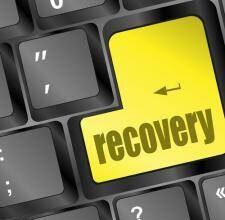Data reporting is often a requirement for large corporations, but traditionally it’s been related to finances. Many companies need to report accurate financial data to keep them accountable to their stakeholders and customers.
However, we’re seeing new data reporting requirements emerge from the European Union that are about to impact businesses worldwide: the Corporate Sustainability Reporting Directive (CSRD).
What is CSRD?
The CSRD mandates that European companies report sustainability information just like they report financial information. Businesses will be required to disclose all known and potential risks they face from climate change and how their business operations might impact the climate and society.
To meet these extensive sustainability reporting requirements and avoid the consequences of not reporting, organizations will need to make crucial investment decisions.
The level of transparency required by the CSRD will put an end to greenwashing and aims to provide organizations with insights into how they can positively influence their sustainability impact on the environment and society.
Who will be impacted by the CSRD?
Many businesses operating in the European Union will be impacted by the CSRD, which is designed to mandate sustainability reporting on the same level as financial reporting. The CSRD replaces the Non-Financial Reporting Directive (NFRD).
These sustainability reporting requirements apply to large organizations, whether or not they’re listed on stock markets. There are around 50,000 organizations that fall under the CSRD regulation, including some non-European companies. For instance, companies with EU-based subsidiaries or securities on EU-regulated markets with a net turnover of €150m will also need to report on CSRD data and follow the updated sustainability reporting guidelines.
Why was the CSRD implemented?
According to the European Commission, the reason for this legislation is to “ensure that investors and other stakeholders have access to the information they need to assess investment risks arising from climate change and other sustainability issues.”
The update to sustainability reporting in the EU is meant to provide more transparency for stakeholders and investors, who have a right to know what they’re supporting. Creating a culture of transparency around sustainability will prevent businesses from hiding the truth about unsustainable practices and openly reward organizations for being truthful about their environmental and societal impacts.
How to prepare for CSRD compliance
If this regulation affects your organization, here’s how you can prepare your next sustainability report to be CSRD complaint:
1. Note the rollout phases
The European Commission is rolling out compliance requirements in three phases. Take note of which phase applies to your organization.
For fiscal year 2024: organizations that are already under the scope of the NFDR.
For fiscal year 2025: all large companies with a net turnover of at least €40 million, assets of at least €20 million, and at least 250 employees.
2. Perform a double materiality assessment
The CSRD reporting requirements are a double materiality principle, which Workiva describes as reporting “both on how its business is affected by sustainability issues (‘outside in’) and how their activities impact society and the environment (‘inside out’).”
3. Incorporate sustainability risk management
Now that sustainability reporting is mandatory, it’s important for European organizations to manage risk associated with sustainability. Connect with your risk department as early as possible to start managing the potential risk factors in sustainability for future stakeholder reporting using the forthcoming sustainability taxonomy.
4. Start sustainability reporting compliance early
Don’t wait until the last minute to start complying with the CSRD. Start your compliance efforts as soon as possible, even if you don’t currently fall under the scope of this regulation. Although it’s not yet universal, it will likely eventually become a requirement for all businesses across the globe.
5. Make sure you create digital access to your sustainability reports
Under this new regulation, organizations will be required to make sustainability reports available in digital format, so be prepared to create or use a CSRD compliant system like Workiva’s that takes the forthcoming sustainability taxonomy into consideration.
Is creating a sustainable economy possible?
Organizations impacted by this legislation are going to need to do some serious adjusting especially those whose sustainability reporting is not naturally integrated into business operations. Many businesses may not even think about sustainability reporting unless they are a company that specifically works in the socio-environmental field.
This legislation is the first step in moving toward a sustainable economy. For decades, businesses have been able to operate without any accountability for the environmental impact they have on the planet. This is what everyone is used to, and the CSRD is shaking things up for the future of corporate social responsibility reporting.
It may be a long road to reach the point where we have a sustainable economy, but it all starts with accountability. Once sustainability reporting is fully integrated into business practices, and organizations are legally held accountable for being transparent about their environmental impact, the next step will be to encourage them to minimize negative impacts.
Get CSRD-compliant as soon as possible
If your company is subject to this EU regulation, get CSRD compliant as soon as possible, even if you aren’t required to report on your businesses’ sustainability efforts for some time. The faster you get in alignment with this CSRD regulation, the easier your transition will be when you are required to create sustainability reports in the future.








